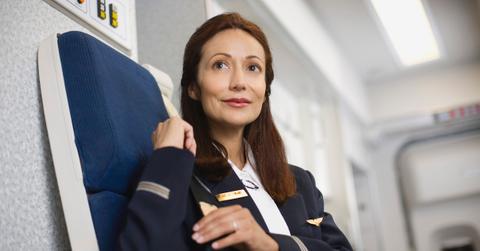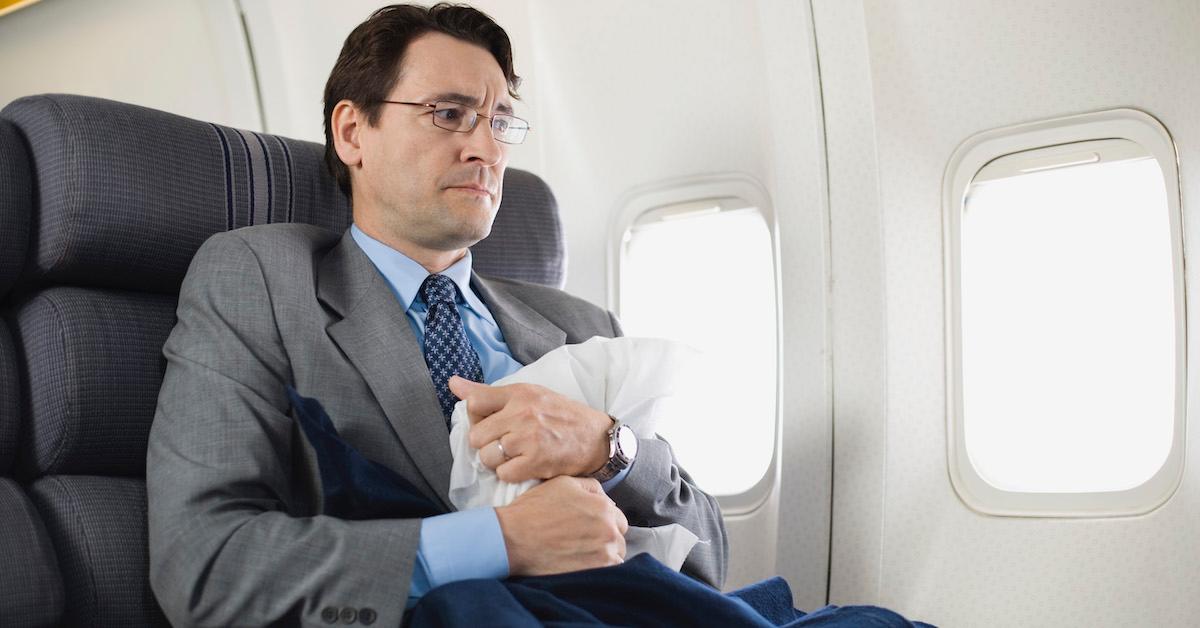Flight Attendants Actually Sit on Their Hands As a Safety Precaution
Updated Jan. 30 2024, 12:05 p.m. ET

The Gist:
- Frequent fliers may have noticed that flight attendants sit on their hands while seated in the jump seat on a plane.
- This position isn't just to hide a bad manicure — there's actually a very important safety explanation behind the posture.
- Passengers should also assume a particular position on an aircraft if directed to do so.
There are so many intriguing opportunities to people watch while traveling, especially by plane — and sometimes your flying experience goes viral, like when a fellow passenger completely flips out mid-air.
But among the curiosities you may encounter while airborne is that flight attendants sit on their hands while seated in the jump seat of an airplane.
Are they trying to hide a manicure that's peeling off? No. Rather, there's a very important safety reason that flight attendants sit on their hands. Keep reading for all of the details.
Flight attendants sit on their hands as part of the brace position.
Much like everything else flight attendants do, there's a practical reason behind why they sit on their hands (other than perhaps continuing to go through the safety presentation as if we've never seen it before).
Per Simply Flying, a member of the flight crew seated in a jump seat will assume the brace position during takeoff and landing. The position involves sitting rigidly against the seat back, with their knees together, feet flat on the floor, and their hands underneath their bottom.
You may also have noticed flight attendants sitting with their hands in their laps, which is also a common brace position.
The brace position may vary by airline or region. But ultimately, in the event of an unexpected emergency, a flight attendant would have the best chance to sustain minimal injury — or have the best chance to survive — in this position.
Meanwhile, for passengers who are seated in the rows of the plane, the Federal Aviation Administration has specific recommendations for how to brace for an impact, and everyone should be aware of the recommendations.
Passengers on an airplane should also assume a bracing position if necessary.
Your flight crew will advise if assuming a brace position is necessary during your flight.
Of course, you hope fervently that this never happens, but in the event of an emergency, it's obviously better to know what to do.

According to the FAA, you want to follow the instructions of your flight crew because they know the best brace position for passengers on the particular aircraft, based on a variety of factors.
But in general, passengers would want to lean forward in the seat, and brace their torso on their legs, tucking the arms under the knees, with the head facing down rather than turned to look in one direction or another. Your feet should be flat on the floor.
While myths have circulated that, yikes, the brace position simply kills you quicker in the event of a crash, multiple tests have confirmed that the brace position offers the best chance of survival should you be unfortunate enough to be in this situation.
